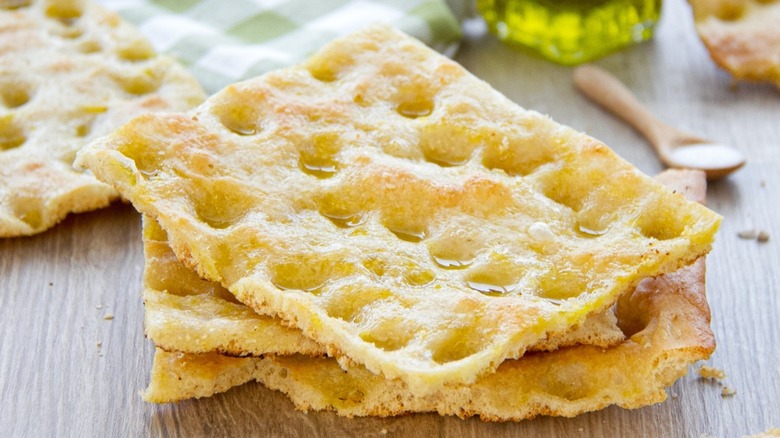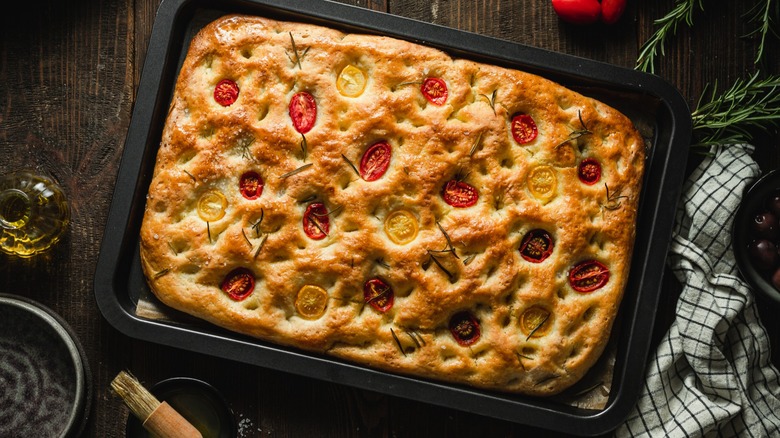The Original Italian Focaccia Is Not Quite The Same Bread We Know And Love Today
Focaccia alla genovese, originating from Italy's coastal city of Genoa, boasts a rich heritage. It has long served as a staple in Ligurian cuisine, cherished as a humble fare enjoyed by people from all walks of life. This bread, eaten at any time of the day, is known for its golden, crusty exterior and airy interior, generously infused with olive oil and salt. Traditional recipes often incorporated ingredients like malt extract and brewer's yeast, although these are less common in modern adaptions. Over the centuries, the bread's recipe has evolved, but it remains deeply rooted in the history of Genoa, reflecting the straightforward lifestyle of the Italian Riviera.
In contrast to more embellished variations of focaccia bread (like our breakfast focaccia recipe), which often feature bold toppings and flavors, focaccia alla genovese stands out for its understated elegance. The original version emphasizes simplicity, relying on essential ingredients like olive oil and salt to accentuate the bread's natural yeastiness. While current recipes may include veggie additions such as sun-dried tomatoes, olives, or caramelized onions, focaccia alla genovese remains faithful to its minimalist origins. This dedication to its roots not only preserves its history but also reflects Ligurian cuisine's focus on quality and tradition.
Evolving techniques and modern variations
While focaccia alla genovese maintains its hallmark of hand-dimpling, the evolution of its preparation highlights key differences between traditional and contemporary methods. Historically, the bread was baked in high-temperature ovens, around 550 degrees Fahrenheit, which produced a darker, crispier crust. The traditional dough included malt extract to feed the yeast instead of sugar, adding a touch of sweetness and aiding in texture development. This technique was performed with great care, as the hand-dimpling process created distinctive pockets that captured the generous drizzle of olive oil, enhancing the bread's flavor and richness.
Today's focaccia, while still utilizing the hand-dimpling technique, has evolved with some notable changes. Modern bakers typically use lower baking temperatures, around 450 degrees Fahrenheit, resulting in a lighter-colored, softer crust. The shift from brewer's yeast to more commonly used ingredients like instant yeast has further simplified the process, allowing for quicker preparation. One common mistake to avoid when making your own focaccia bread is using the wrong type of yeast; be sure to use rapid-rise or bread machine yeast rather than active dry yeast, which requires different handling. Contemporary recipes, like this vibrant, garden art vegetable focaccia bread, with fresh asparagus, sweet peppers, red onion, and more, contrast the unadorned approach of traditional focaccia alla genovese. Newer variations reflect a broader trend towards personalized and gourmet interpretations while honoring the bread's rich history.

